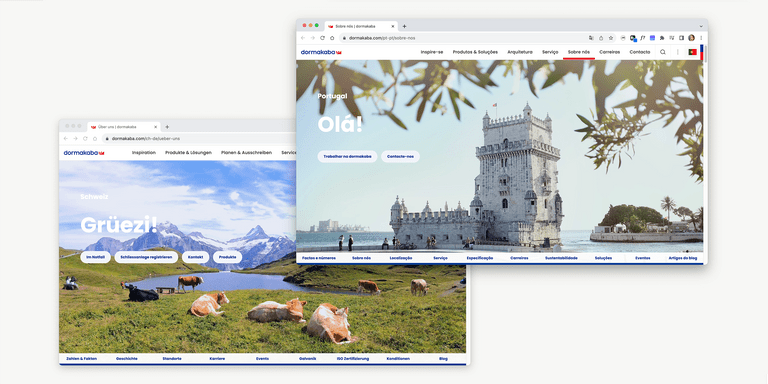In essence, the overall project aimed to make the country-specific websites more unified. Reusing data was another idea that emerged. References, also known as the company’s use cases, are one example of data that can be reused. A reference is most often used to showcase a company’s product or service. This kind of reference usually contains the same data and is self-contained regardless of its context. A reference is a clear concept of something and can be used in a variety of places, like a website, an advertisement or elsewhere.
One challenge is defining the concept. Another is bringing that concept into context with other things.
The System
Meet Contentful, a Content Management System (CMS) that provides an interface full of features for you to create and use content to your heart’s content. On the CMS, content is defined and stored in “spaces”. Every space can have its own content types. We also call these content definitions. The content type defines the structure of the content by outlining its properties. All content types have different field types available, like simple text, assets or links to other content types.
The Solution
The example above shows that a reference has a specific name, can have a distinct set of services or products that were used for it and has other properties like an appealing video for the reference. All of these properties have been defined as fields based on the content type. We simply call this a “reference”.
With that, we have solved the first problem: defining what a reference is.
The primary goal of the project involved the country-specific websites. The second, bigger problem was heavily focused on delivering the references to the country-specific website.
To solve this issue, we started defining other concepts, like a reference page or a list of selected references to be displayed on a page. Whilst a reference in itself might have global significance, each country needed their own selection of references available on their website. This need for individuality meant that the concept of a reference and its usage within the context of a country-specific website needed to be separated. We might call this the birth of country-specific spaces, as most countries have the option to pick the references, showing that they have their own space.
This caused another issue: how do you select a reference from the “global” space within the country-specific spaces? During the implementation phase, Contentful did not support cross-space referencing. So we needed to find our own way of establishing the relationship between any country and reference. After some sprints and investigations, and spending some time thinking about the issue, we found a way to make things work. In the country-specific spaces, we added a content type with a cross-reference field pointing to the global space. This allows editors to select the reference that the country wants to showcase on their own website. This meant a country editor could define a reference page with a cross-reference to the global reference and further information like country-specific contact details.
Mission accomplished!
An editor could now define which references they can showcase on their country-specific website: we allowed them to reuse the global reference. We also used content orchestration for the websites on the exact same content platform where the data itself is defined.
As a little side note: since this was implemented and this article was written, Contentful has further expanded its features and is now providing cross-referencing too!
The road ahead
As with every software project, the journey is an ongoing process.
There are many paths of improvement ahead: references could be used in other channels like mobile applications, other websites and so forth. There could be even more concepts with a global outlook (or even smaller-scale concepts that can be reused elsewhere).

